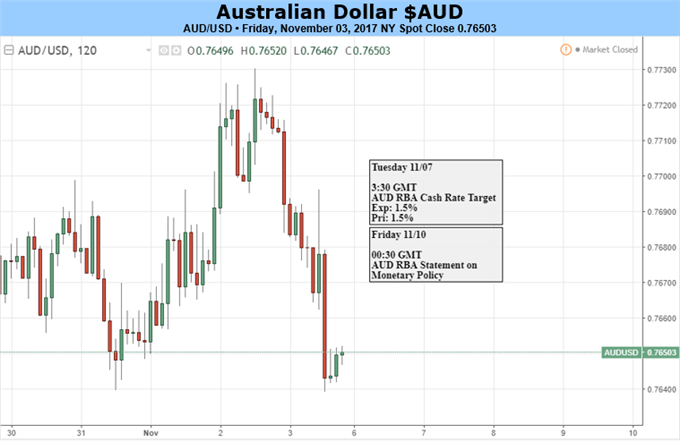
Fundamental Australian Dollar Forecast: Neutral
The Australian Dollar will face a monetary-policy decision from the Reserve Bank of Australia in the coming week, but that may not provide it with much support, if any.
The key Official Cash Rate still languishes at the 1.50% record low which has endured since August 2016. It’s certainly not expected to change on Tuesday when the RBA gives the word.
Now, many other developed market central banks have either tightened monetary policy this year or signaled some intention of doing so. But the RBA has not. What’s more it has explicitly denied that rate rises elsewhere in the world place any burden upon it to follow. One of its officials even said in early October that rates could even go yet lower. That’s not market consensus, of course. Interest-rate futures markets think that the next move, when it comes, will be an increase. But they don’t now fully price one of those until the start of 2019.
Why the reticence? Well, the RBA’s dilemma was nicely underlined last week. Australia’s external, export machine is firing very nicely as the latest trade numbers showed. But commensurate vigour remains lacking in the domestic, consumer sector. There retail sales missed forecasts, while wages remain subdued and consumer debt is eye-wateringly high.
Unless the Reserve Bank has had a dramatic change of heart this month, it can be expected to stick with old themes. That will mean an acknowledgement of the Australian economy’s strengths as well as a frank admission of its weaknesses, probably accompanied by some loud grumbling about the baleful effects of too much currency strength.
Against this backdrop it is hard to see AUD/USD making much headway under its own power. Disappointing US economic data may of course shift the dial in the Aussie’s favour. But the trouble is that we are at that part of the month in which the US data cycle winds down after the crucial official labour-market release. There simply isn’t enough first-tier information on tap in the coming sessions.













Leave A Comment